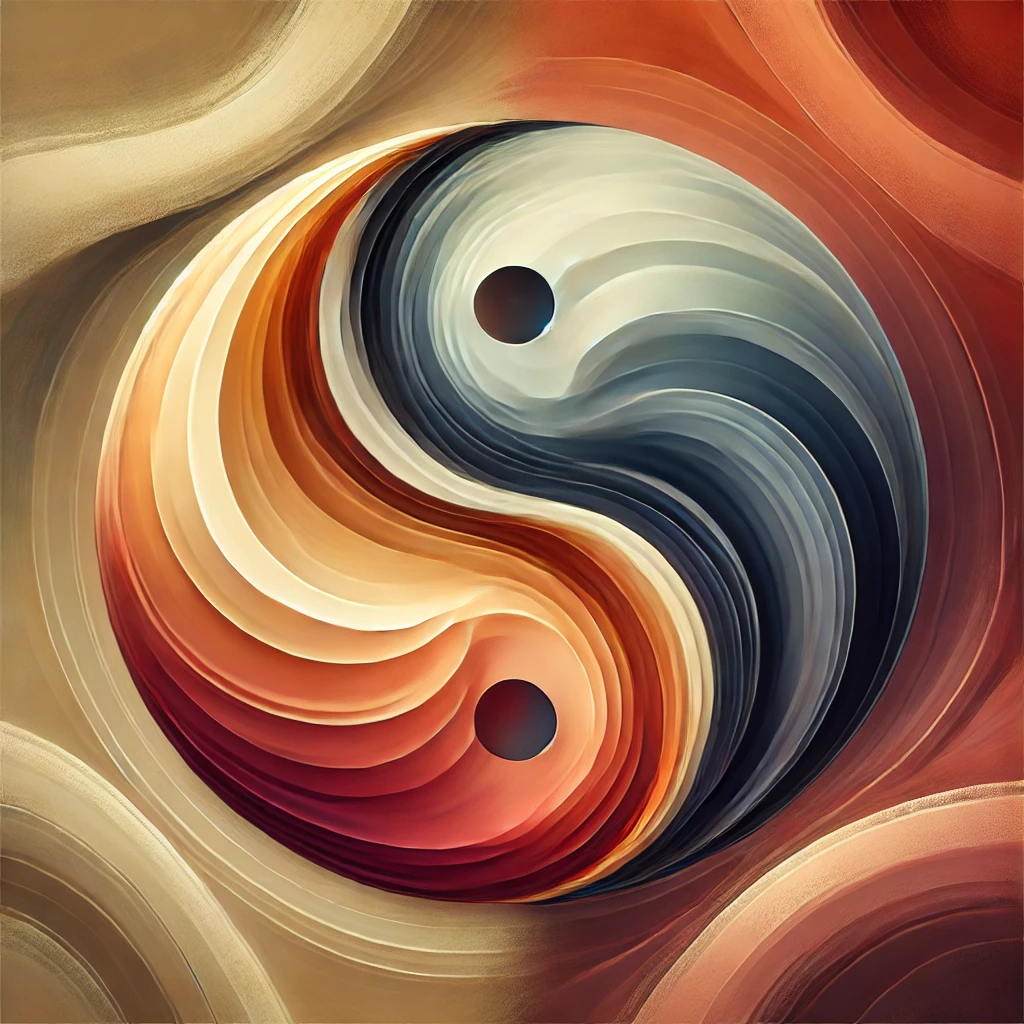Love Creates Hate, and Hate Creates Love: The Paradox of Connection¶
The strongest bonds between people inevitably create the deepest divisions. This isn’t a flaw in human nature—it’s a fundamental pattern shaping everything from intimate relationships to political movements. Like magnetic forces that both attract and repel, love and hate together sculpt the architecture of human connection. Can we explore this phenomenon on a fundamental level, as one might a Theory of Everything, like that of Wolfram?
The Dual Force of Love and Hate¶
Love and hate aren’t merely opposites—they’re two facets of a single force driving connection. Love draws us in, urging closeness, while hate pushes us away, establishing boundaries. Yet these drives don’t exist in isolation; often, they reinforce each other in unexpected ways.
Consider connection as multidimensional. Just as we might adore someone’s creativity while being frustrated by their disorganization, or respect a colleague’s work ethic but dislike their communication style, our connections span various dimensions—emotional, intellectual, practical, moral, political—each pulling us closer in some ways while pushing us apart in others.
This complexity explains why relationships are rarely straightforward. A family member might share our values but clash with our lifestyle, or a close friend might align perfectly with our interests but hold opposing political views. These aren’t contradictions—they’re expressions of how connection naturally operates across dimensions.
Each aspect of connection can involve active or passive forces. Active love, for instance, builds intentional bonds—like the fierce loyalty among activists. Passive love is the quiet comfort of long-standing connections, like the silence between old friends. Similarly, active hate creates intentional distance, while passive hate can be the natural drift that occurs when connections fade.
The Essence of Being: Existence as Connection¶
To matter, something must exist; it must be able to influence connection. An entity that cannot love or hate, or create any relational shift, does not exist in any meaningful way. Therefore, existence and connection are intertwined—manifesting as love or hate, attraction or repulsion.
This interplay of mutual forces explains why love and hate fuel each other in cyclical, constructive, and sometimes destructive patterns, echoing ancient philosophical dualities.
How Love Creates Hate¶
Modern American politics provides a stark illustration of how love can foster hate. As bonds within "red" and "blue" communities deepen, so does animosity toward the other side. Shared values, media, and social ties unify each group so intensely that the other side becomes not just different, but fundamentally threatening. The love within each group fuels their disdain for the other.
This pattern goes beyond politics. When we form strong bonds with certain groups or individuals, we often create boundaries with others. The Civil Rights Movement, for example, gained power through deep internal solidarity, which also clarified distinctions between allies and opponents. Religious communities often experience the same phenomenon: the stronger the internal faith, the more "outsiders" may be viewed as threats.
In technology, Apple’s passionate user base illustrates this dynamic. The shared admiration within the community often transforms into active disdain for Android or PC users, with love for Apple fostering separation.
How Hate Creates Love¶
Conversely, when groups face shared opposition, they develop powerful bonds. In politics, when conservatives or liberals feel marginalized, their internal solidarity grows stronger under pressure.
The LGBTQ+ community provides a clear example. Societal rejection didn’t weaken the community; it catalyzed resilient human bonds and support networks. Similarly, religious minorities often develop the tightest connections in response to persecution.
Even in technology and business, shared opposition creates unity. Cryptocurrency communities thrived partly through their opposition to traditional banking, and local businesses often form alliances when faced with competition from large chains.
A Unified View: Understanding, Not Eliminating, These Forces¶
We often hear that "hate is bad" and "love is good," yet these labels lack universality. What is universal is existence. If something doesn’t exist, it doesn’t matter. Therefore, the goal of existence isn’t to eliminate love or hate but to understand and harness these forces in ways that foster constructive coexistence.
A better understanding of these dynamics enables us to:
- Build communities with strong bonds without demonizing others
- Create spaces for distinct groups to retain unique identities while finding common ground
- Recognize that opposition can drive innovation and unity rather than division
When it seems like society is hopelessly divided or opposition is tearing us apart, we can remember: these forces are intertwined. The goal isn’t to eliminate division but to build systems that harness both love and hate in constructive ways.
By observing the interplay of love and hate in our own communities—whether political, professional, or personal—we can design systems that work with these forces, not against them.
